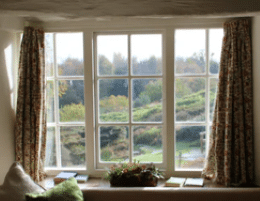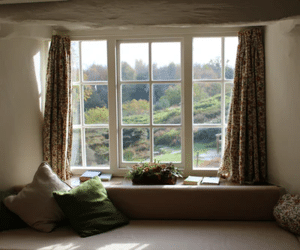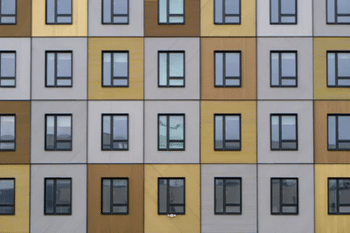Home Outdoor Tips: How To Protect Your Windows And Still Have Natural Light

No matter how pricey the interior design and setup, a home without natural light appears dreary and gloomy. The natural light that enters your home not only brightens it but also helps eliminate a great number of germs and microorganisms that aren’t visible to the naked eye. A lack of illumination inside one’s house results in the homeowners being inexplicably unhappy. That being said, it’s critical that enough natural light enters your home on a daily basis.
Common sense entails that maximum light allowance comes through the windows, however, there are many environmental factors your windows need to be protected from which might otherwise damage the quality and appearance of your windows. So, the conundrum is, how do you protect your windows while also letting maximum natural light inside your home? Well, there are numerous ways to do that, some of which are as follows.

1. Insulated Cellular Shades
Cellular shades are made up of pleated material that contains multiple layers in a honeycomb cross-section. These shades can usually be folded up at the top, sometimes the bottom, and are considered to be great insulators. The air pockets that exist between the layers of these shades help to insulate them and reduce the amount of heat that is absorbed through the windows.
Since excessive heat energy can be damaging to not just your house, but also your windows, some sort of heat reduction is required. These shades do exactly that and can reduce a significant amount of heat. Since they can be opened from the top and bottom of the windows, daylight entering your home can be effectively controlled. To maximize natural light, you can automate these window installations to open and close at predetermined times.
2. Window Blinds
Window blinds contain several slats and apertures that help manage heat flow while also allowing enough light to enter the house. These slats may be adjusted to let in as much light as possible while also shielding your windows from excessive heat. You have the option of choosing premium plantation shutters which give you ultimate control over the amount of light entering your home. You can also opt for blinds with horizontal slats that can be readily adjusted to reflect incoming sunlight towards the ceiling. This, along with a light-colored ceiling, will absorb the heat while allowing natural light to flow freely into the room.
3. Window Films
If you want to enjoy the view outside your windows without blocking it with shades, blinds, or curtains, then window films are the perfect solution for you. This option allows you to cover your windows while still allowing plenty of light in. They also help to defend against solar heat gain and UV overexposure. While these films do filter sunlight, they do so by eliminating only the hazardous elements while allowing the rest to pass through.
These films generally have multiple sets of layers. The innermost layer consists of adhesive material and the middle layer is a polyester film that is coated with a scratch-resistant top. If you choose tinted films, the light will likely not get through to your interior, so it’s best to choose a transparent film.
4. Exterior Window Screens
Setting up a solar screen outside your windows can significantly help reduce solar heat gain, glare, and excessive UV radiation. They can either be installed as roller shades or fixed panels. The best part about this option is that they not only protect your windows against dirt, dust, and excessive glare but also allow light transmission and outside visibility. Keep in mind that the openness of your screens will define how much light is allowed to enter your windows.
5. E-glass Windows
Low-E glass is becoming increasingly popular, and it may be the best option for protecting your windows and interior from harmful environmental effects. Low-E glass, paired with a thin transparent layer, creates a transmission plane for sunlight, filtering out damaging UV rays while allowing natural light to pass through. It also maintains the inside temperature of your home and protects the interior from solar damage.

While protecting yourself and your home from harmful environmental factors hold importance, you shouldn’t have to sacrifice the visual appeal of your home’s interior either. Natural light is one of the most important things that is considered when buying a house because it can transform the look of a place. If there is sufficient illumination in your space, your home will not only look bigger and brighter but will also seem to be more appealing. So, it is important that you choose the best options available that let maximum light into your home.



